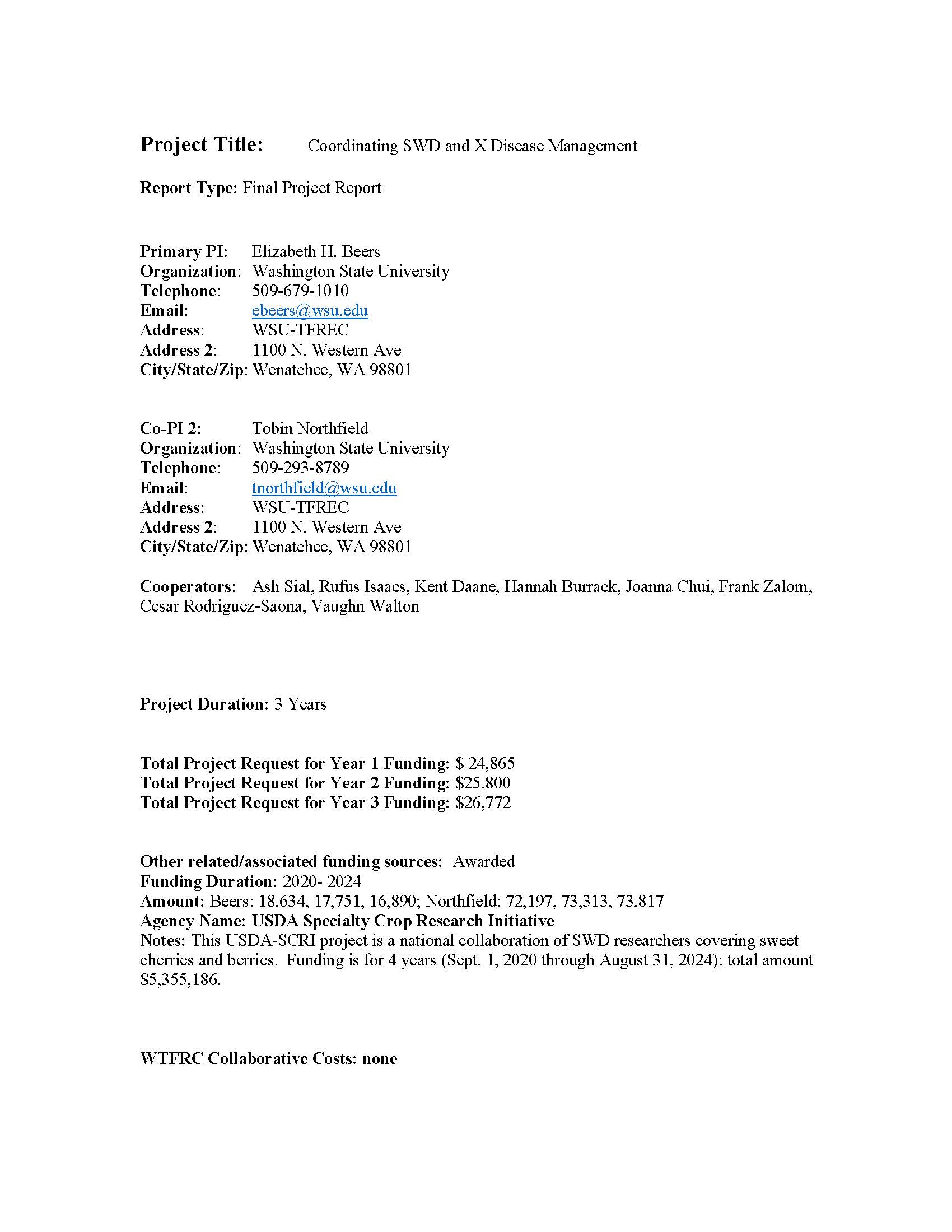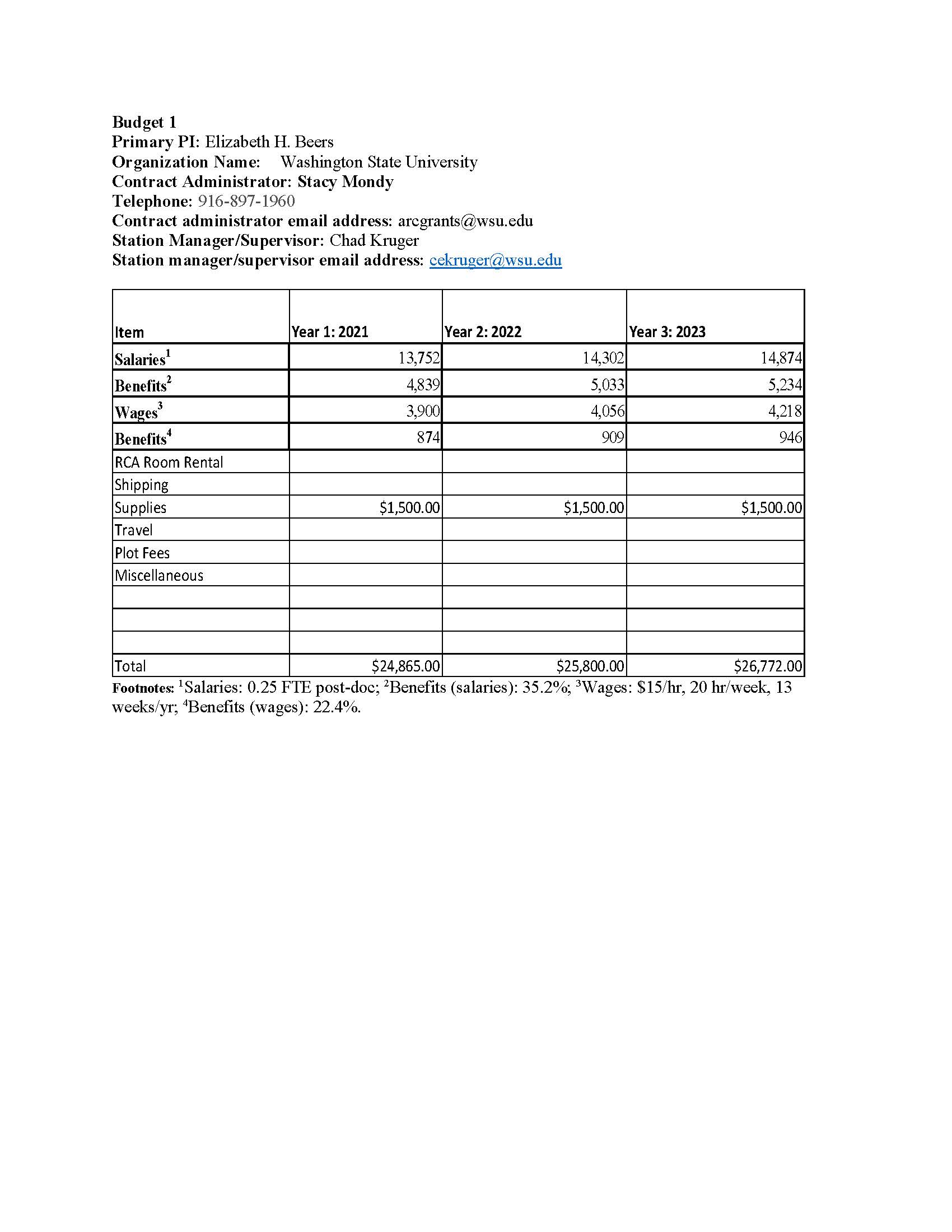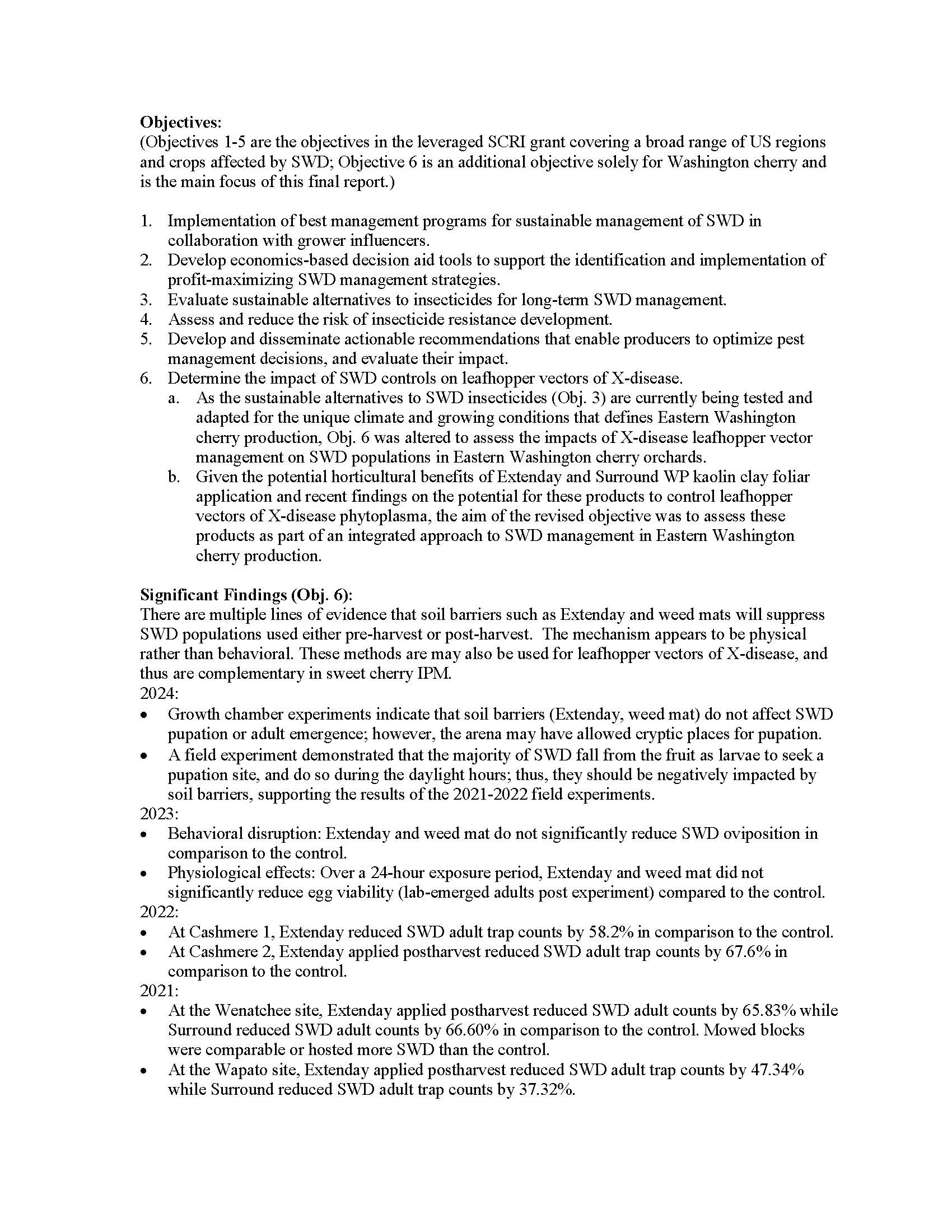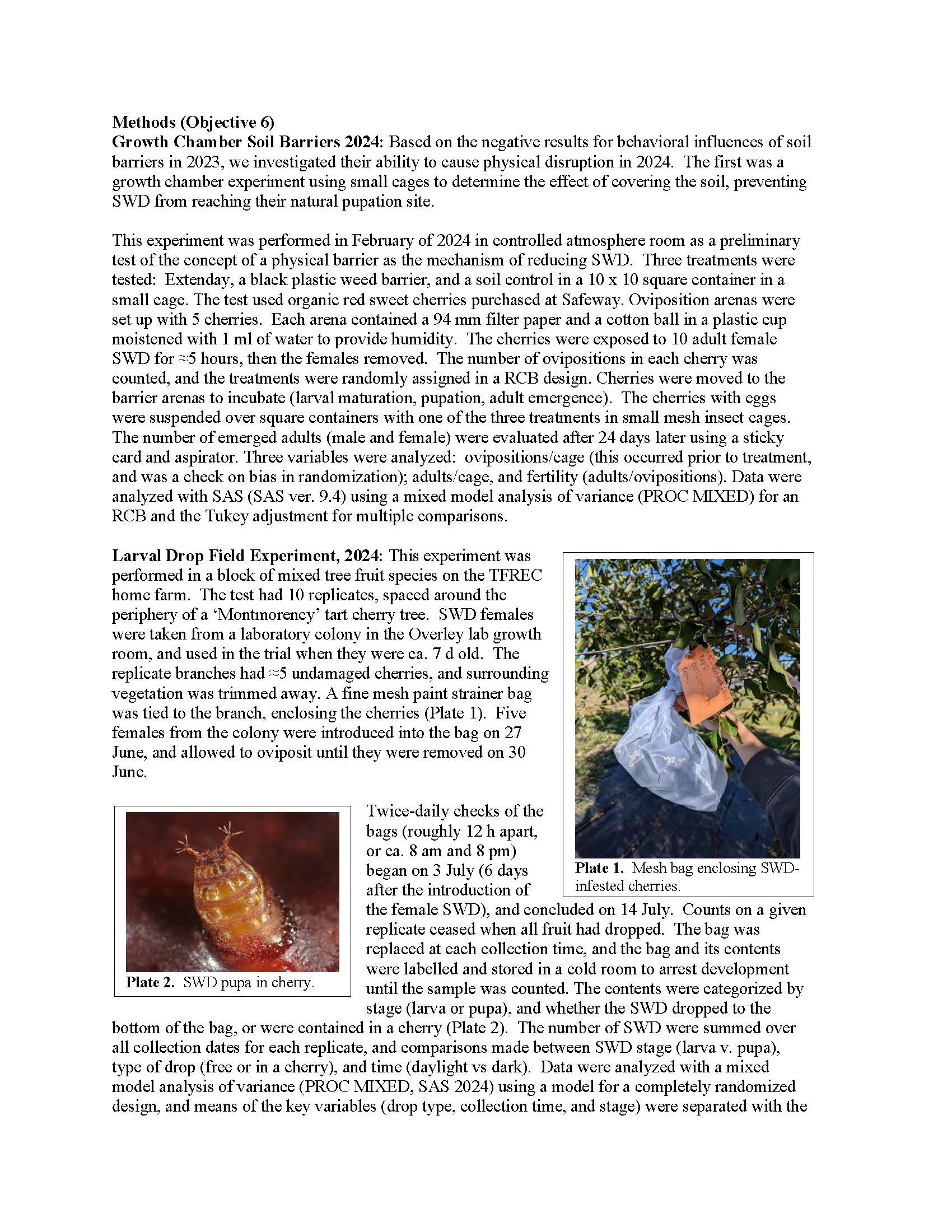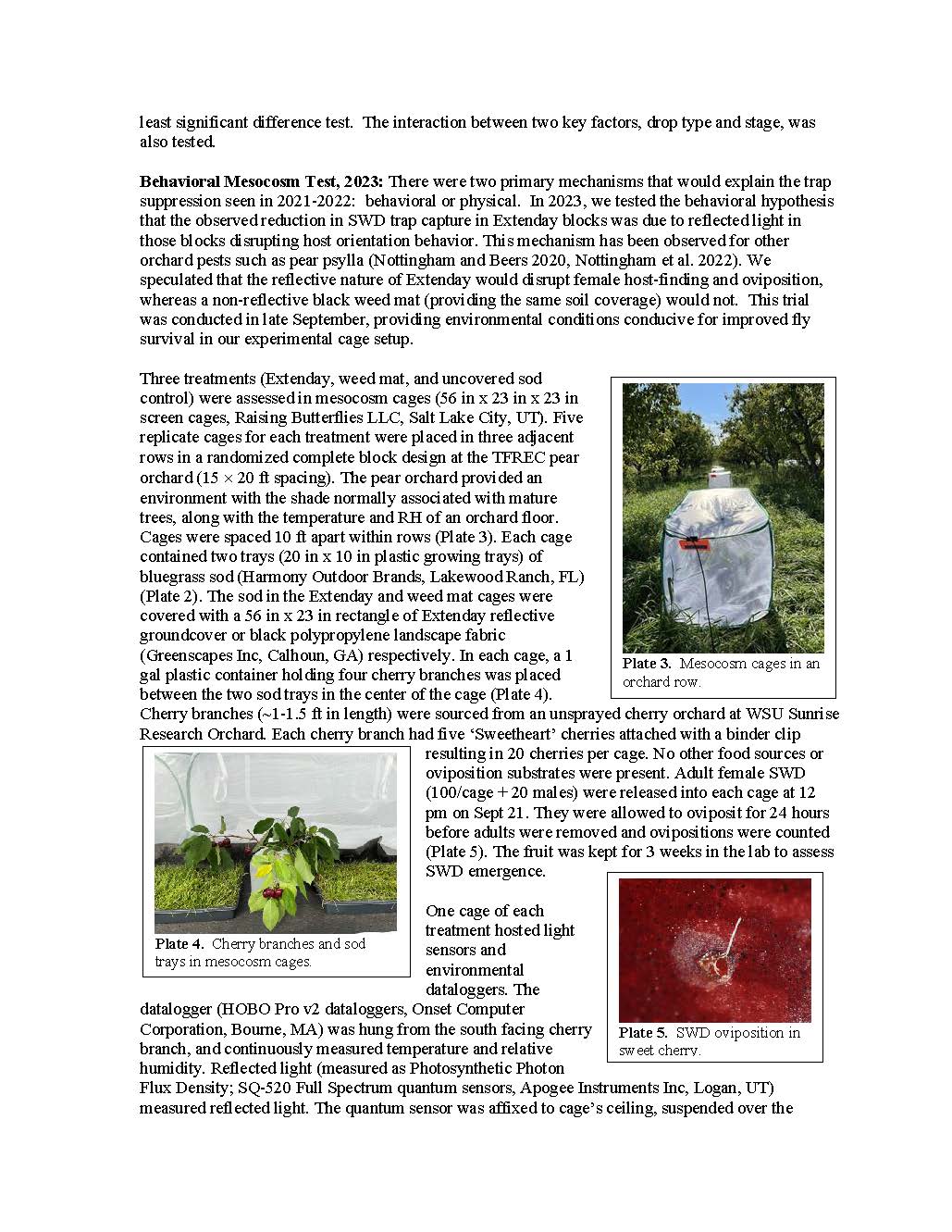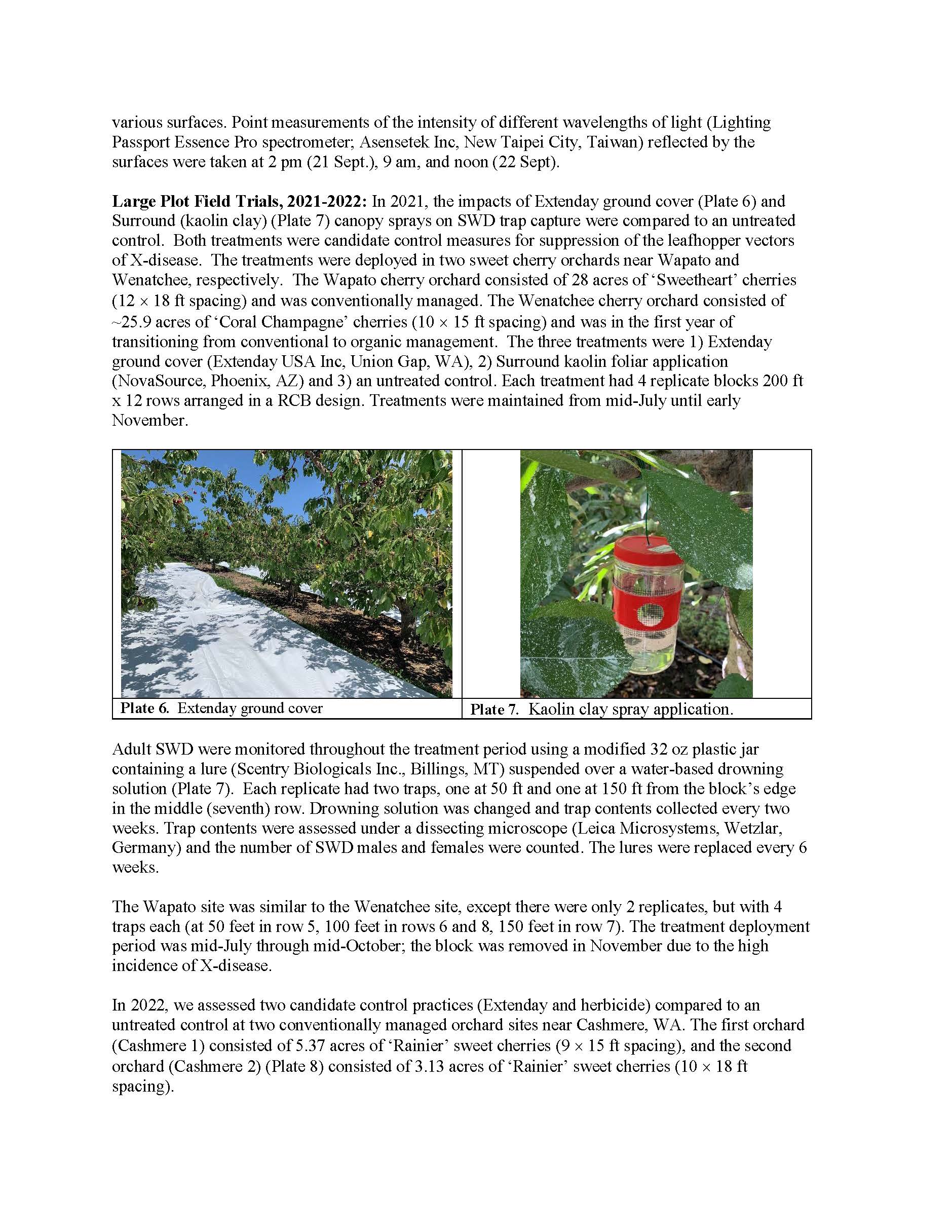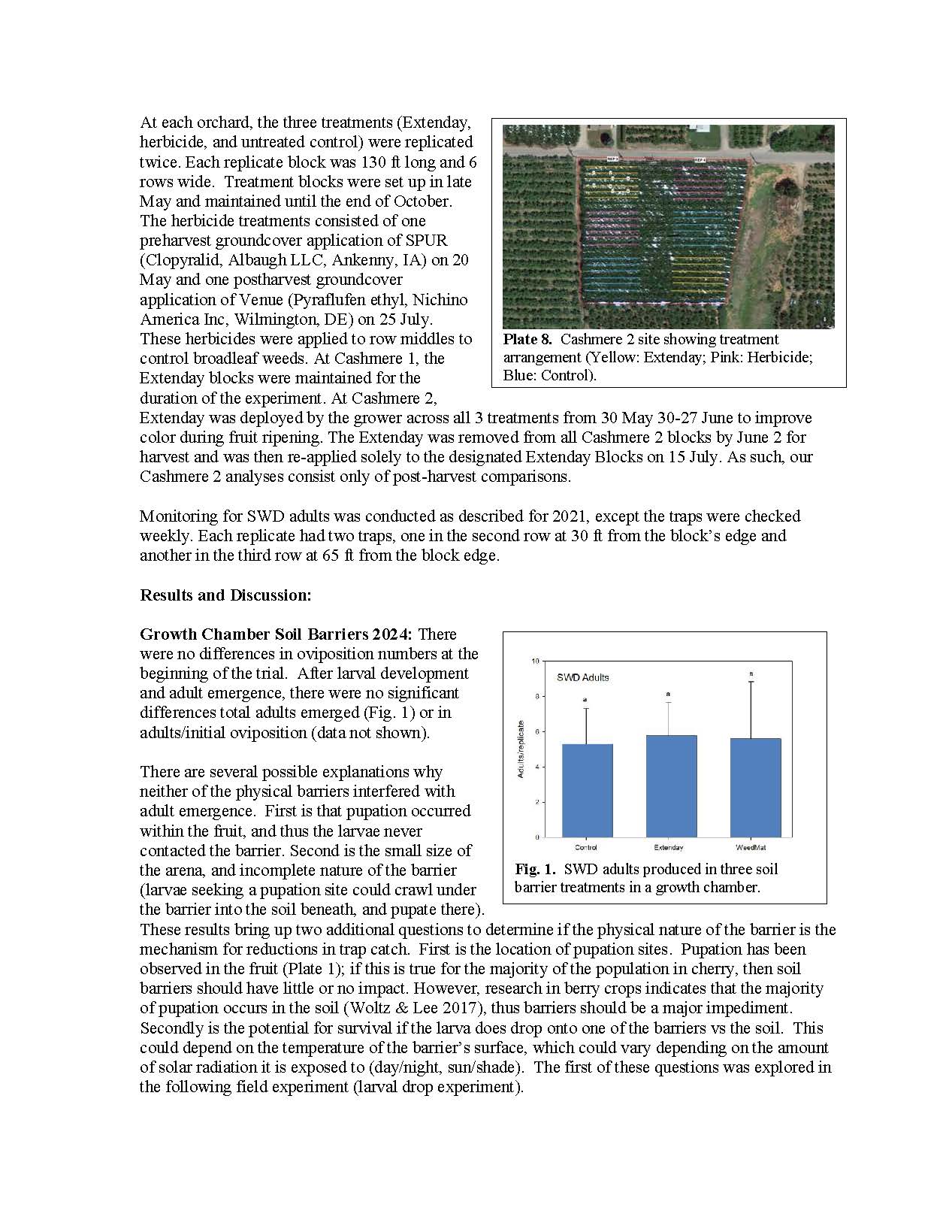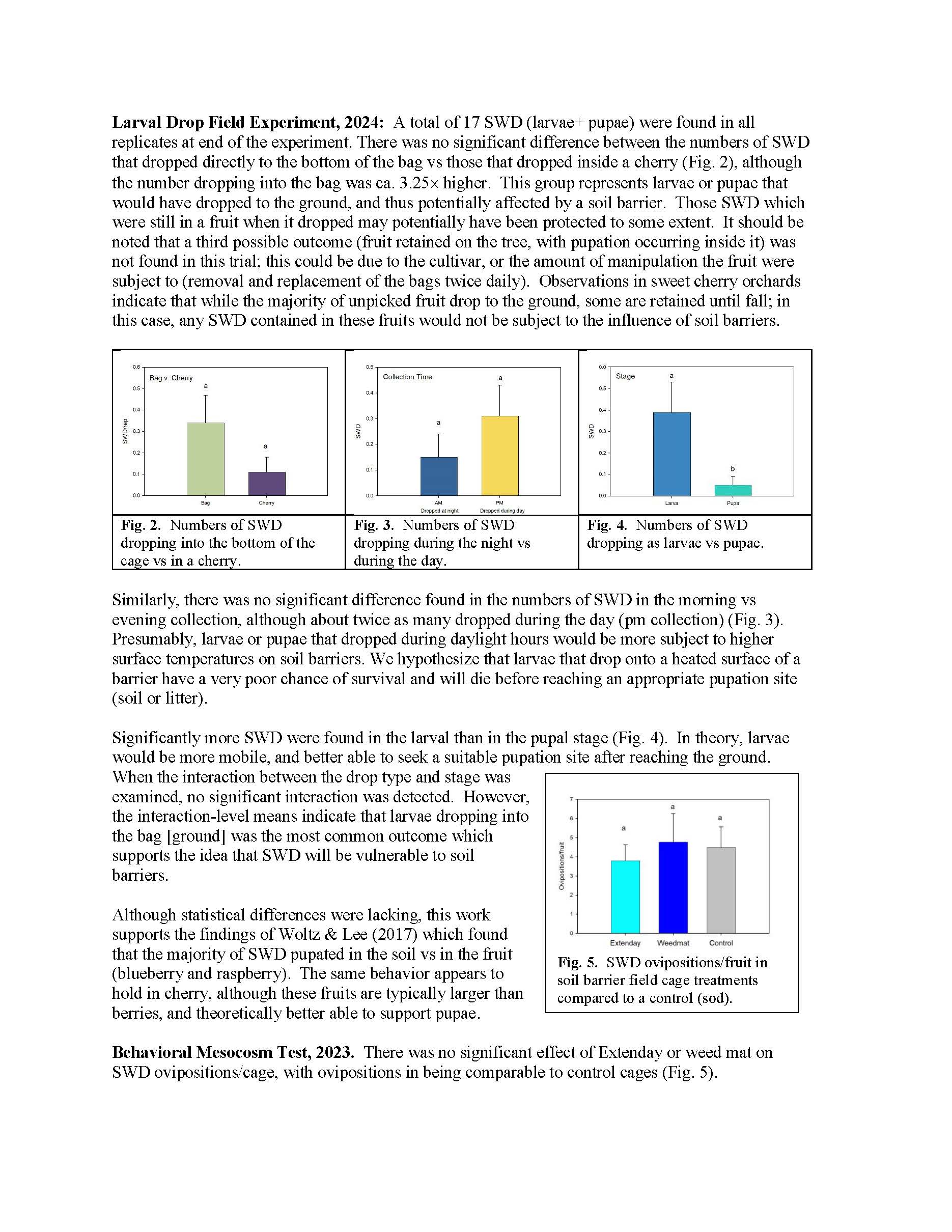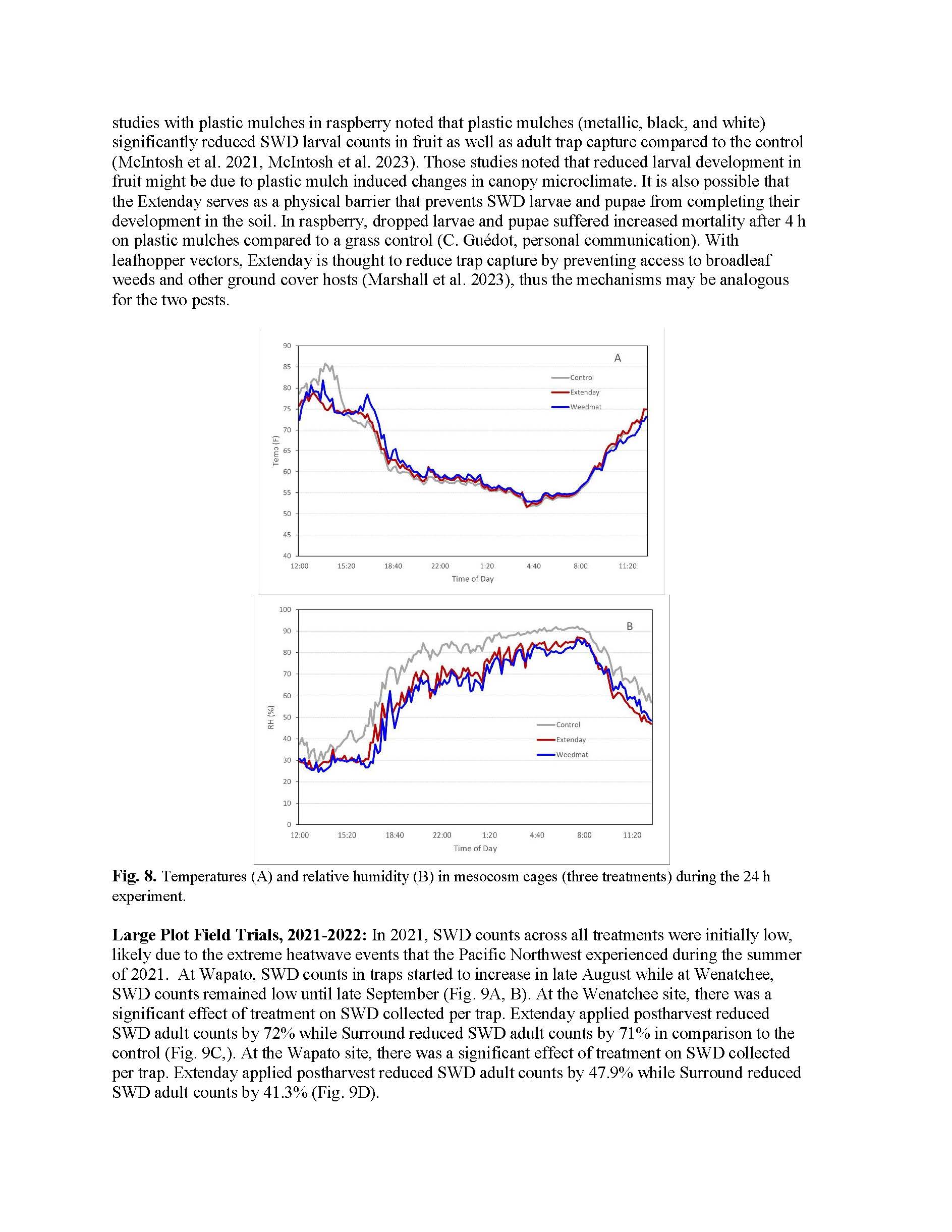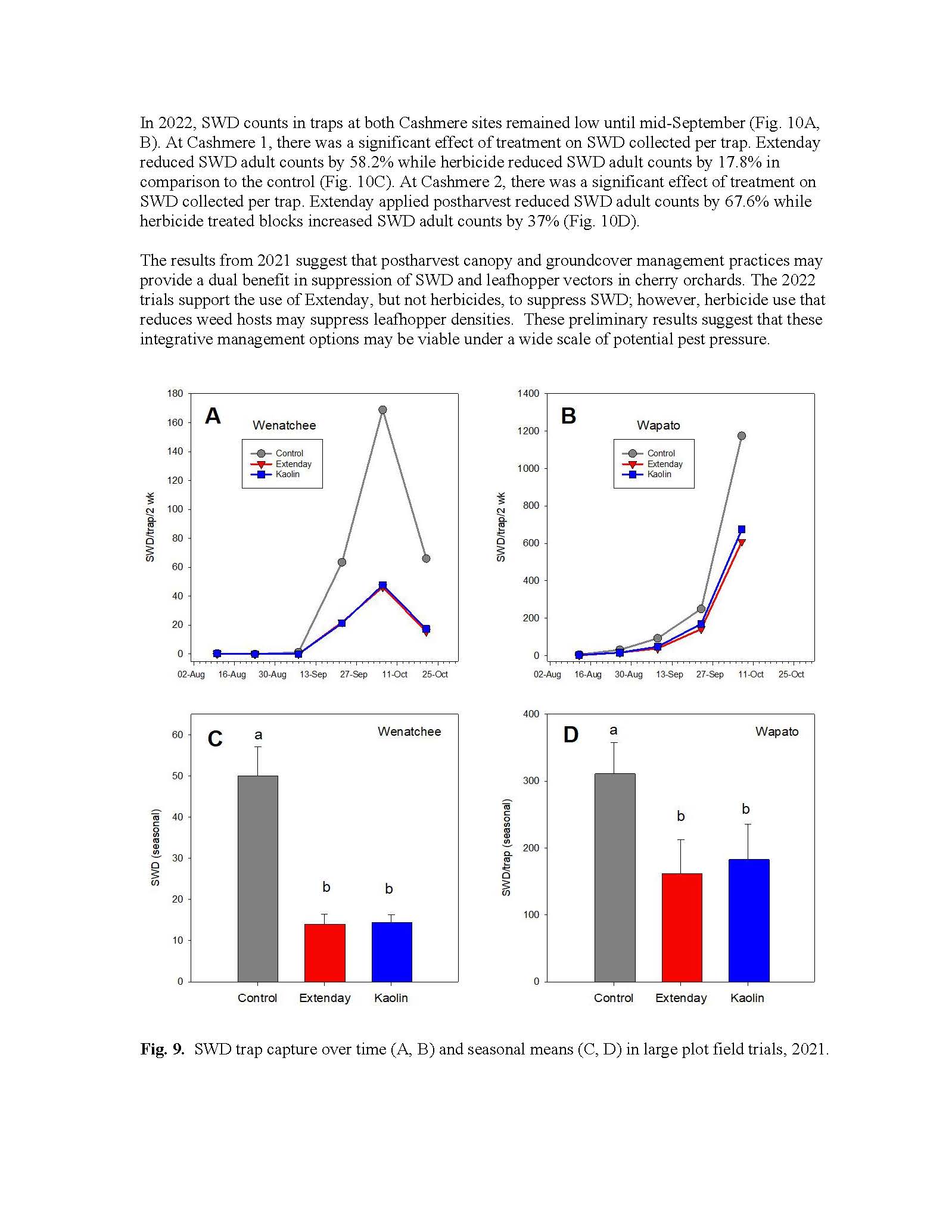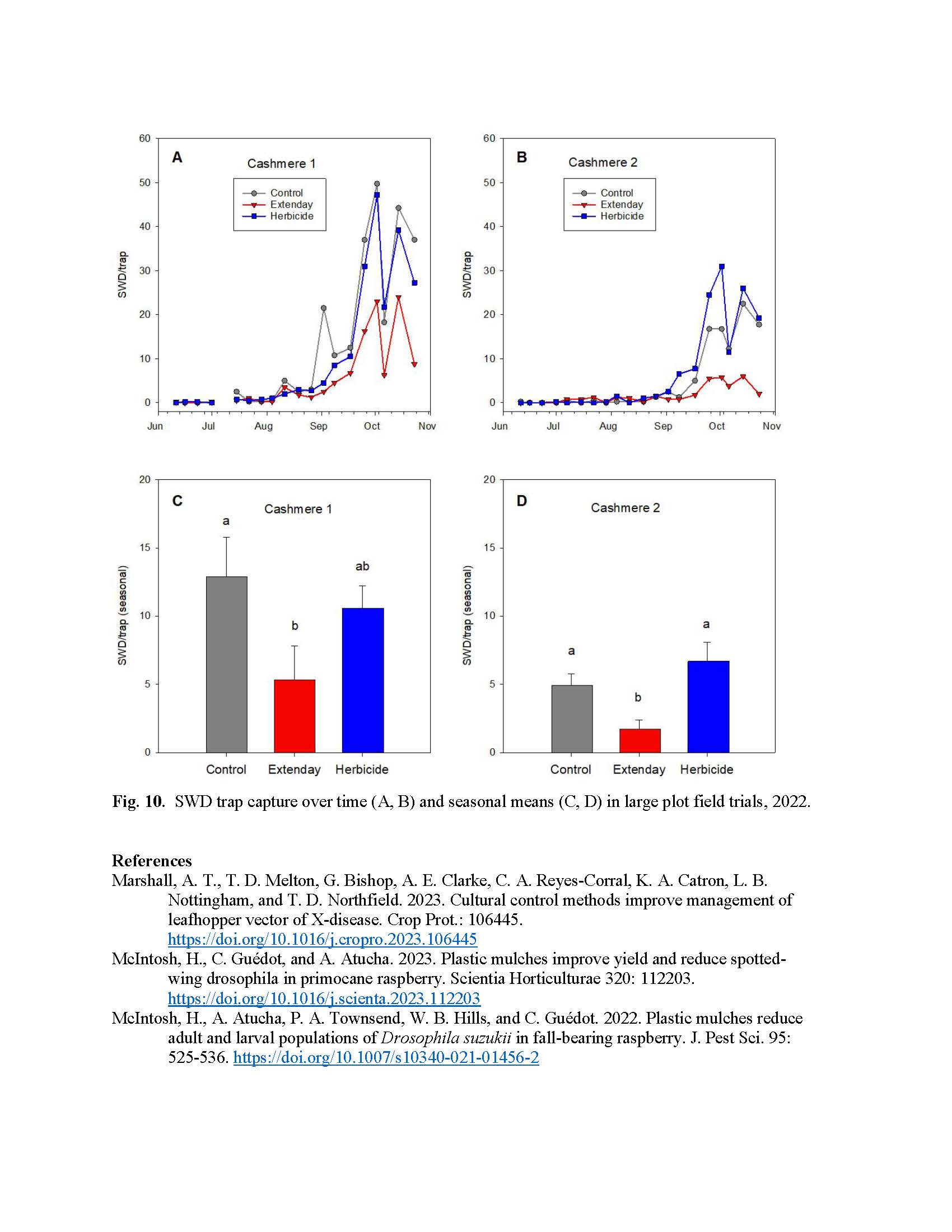Coordinating SWD and X Disease Management
Author: Elizabeth H. Beers
Published: 2025
Summary: The detection of spotted-wing drosophila (SWD) in eastern Washington in 2010 started a new era in insect control in sweet cherry. Up until that point in time, western cherry fruit fly had been the only direct pest of consequence, because of the permanent quarantine restrictions placed on it. Counterbalancing insect pests were lethal diseases caused by viruses or phytoplasmas; the rise of X-disease in the late 2010s shifted the focus to vectors of a disease that, if left unchecked, could kill an orchard (as opposed to destroying the current year’s crop). As always, growers were left facing the dilemma of managing their orchard both for the present and the future. This project sought to integrate two of the major concerns of a pest management program, specifically with the use of non-pesticide tactics. This project examined the use of tactics were more sustainable that prophylactic sprays for SWD and leafhopper vectors which are currently the mainstay of control for these two pests. The work on SWD was done in tandem with the work on leafhoppers, with the idea of finding tactics that were effective for both. This project focused on SWD suppression; work on leafhopper vectors may be found in other projects. The field tests examined the use of a geotextile, Extenday, which was used for horticultural purposes (fruit coloration and maturation); and a postharvest spray whose original use was to reduce doubling of fruit in the subsequent year’s crop (Surround, a particle film of kaolin clay). Both tactics were found to suppress trap capture of SWD in the post-harvest period (the period critical for leafhopper vector control). Subsequent tests examined Extenday and herbicides for control of broadleaf weeds in the row middles; the latter was directly more specifically at leafhopper vectors and nymphal development. The continuing theme is that Extenday worked for both pests, while herbicides (effective for leafhoppers) were not helpful in SWD suppression. Regardless, the mechanisms for the various tactics became important to understanding what they would work for, and why. For the leafhopper vectors, both Extenday and herbicides limited access to the nymphal hosts, and disrupted the life cycle of leafhoppers in the orchard. For SWD, the mechanism was less clear. The reflective properties of Extenday might exert a behavioral influence that prevented correct orientation to the host plant for oviposition; examples of this effect in other crops had been demonstrated. In addition to possible behavioral influences, Extenday functioned as a soil barrier that could limit access to pupation sites. This physical function, however, could also be served by other soil barriers (e.g., black plastic mulch). To this end, we tested the physical effect of soil barriers, but found no effect on the smaller scale of research trials. Drilling down into the underlying biology, it would appear that larvae are most likely to drop directly to the ground (thus potentially influenced by a soil barrier), and are more likely to do it during the daylight hours, when surface temperatures are more likely to be lethal. The studies of mechanism underscore the importance of scale in research experiments. The smaller scale gives more repeatability and precision, but may miss effects that operate at a larger scale. The effect of kaolin clay sprays remains open to question; its mechanism was not pursued for SWD suppression, in part because preharvest use (the critical period for SWD) is impractical because of the difficulty in removing it from the fruit during packing. Post-harvest, it appear to be a useful, cost-effective method of suppression and for both leafhoppers and SWD. The higher cost of Extenday may be offset by the horticultural benefits, providing an additional incentive for its use.
Keywords:

